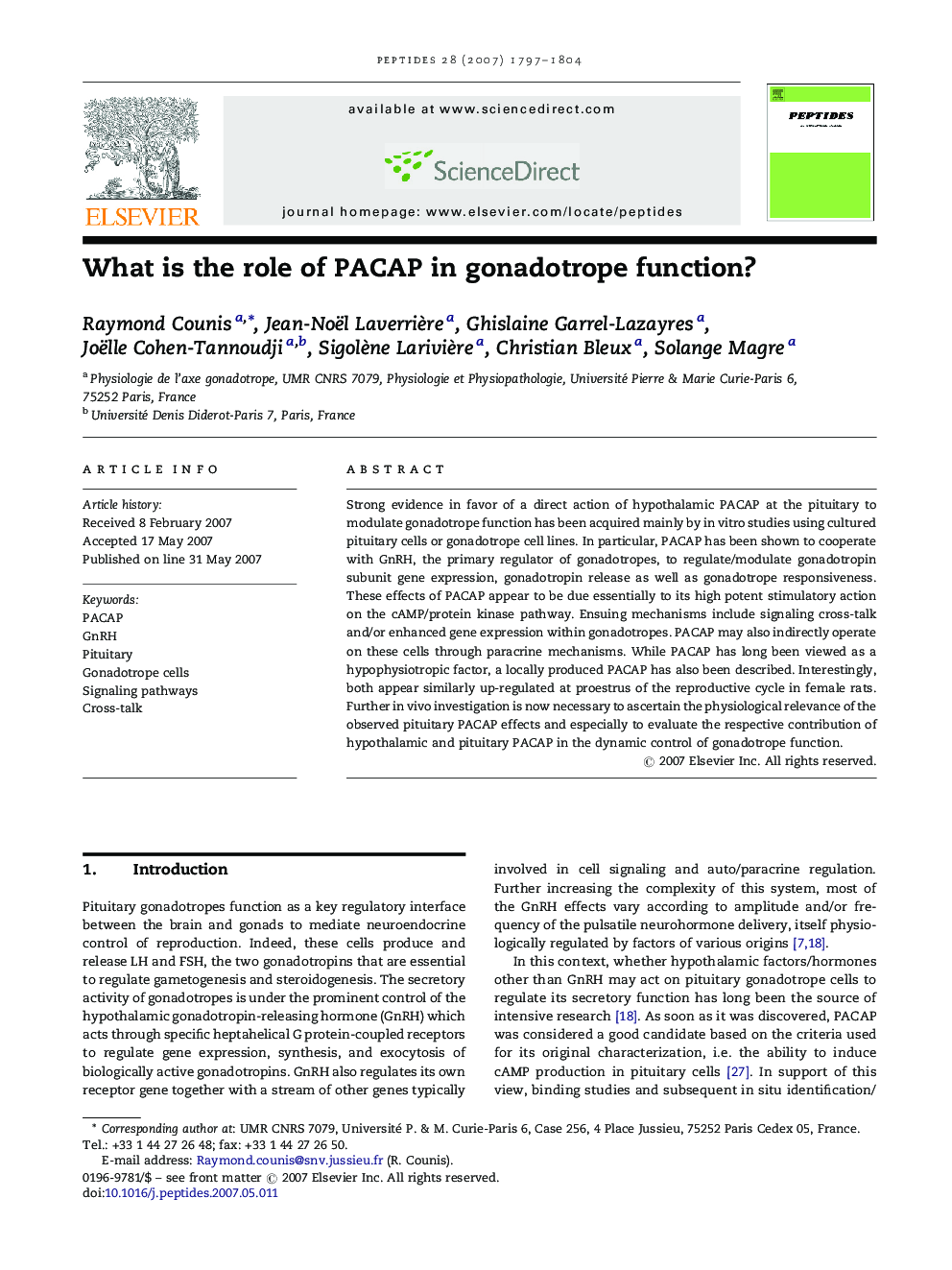| Article ID | Journal | Published Year | Pages | File Type |
|---|---|---|---|---|
| 2008480 | Peptides | 2007 | 8 Pages |
Abstract
Strong evidence in favor of a direct action of hypothalamic PACAP at the pituitary to modulate gonadotrope function has been acquired mainly by in vitro studies using cultured pituitary cells or gonadotrope cell lines. In particular, PACAP has been shown to cooperate with GnRH, the primary regulator of gonadotropes, to regulate/modulate gonadotropin subunit gene expression, gonadotropin release as well as gonadotrope responsiveness. These effects of PACAP appear to be due essentially to its high potent stimulatory action on the cAMP/protein kinase pathway. Ensuing mechanisms include signaling cross-talk and/or enhanced gene expression within gonadotropes. PACAP may also indirectly operate on these cells through paracrine mechanisms. While PACAP has long been viewed as a hypophysiotropic factor, a locally produced PACAP has also been described. Interestingly, both appear similarly up-regulated at proestrus of the reproductive cycle in female rats. Further in vivo investigation is now necessary to ascertain the physiological relevance of the observed pituitary PACAP effects and especially to evaluate the respective contribution of hypothalamic and pituitary PACAP in the dynamic control of gonadotrope function.
Related Topics
Life Sciences
Biochemistry, Genetics and Molecular Biology
Biochemistry
Authors
Raymond Counis, Jean-Noël Laverrière, Ghislaine Garrel-Lazayres, Joëlle Cohen-Tannoudji, Sigolène Larivière, Christian Bleux, Solange Magre,
